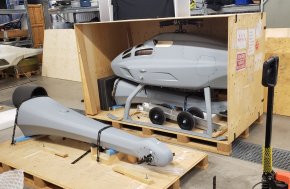Sure
The Attack will be an order of magnitude more complicated than Collins, with a lot of new and untested technology. Therefore,
1. The lead ship will be delayed, due to teething pains, and costs will rise as a result
2. The $50 Billion budget will prove to be too little
3. The politicians will get up in arms, and there will be "inquiries"
4. The general public will lose patience, with the Collins issues still fresh in mind (if they have forgotten about Collins, ABC will be quick to remind them)
5. The project will be curtailed, or possibly even cancelled.
This does not even take into account the inevitable scope creep, or questions of manning, to name a few. And to claim that the issues with Collins were all on Kockums is blatantly wrong, as is described here:
Australia’s Collins-Class Submarines Enter a 20th Year of Trouble To paraphrase: "An Australian audit reported that the entire program was beset with poor planning, lack of client-shipyard coordination, lack of performance vision, and poor craftsmanship from the builder Kockums."
From an outsiders perspective Attack seems like Collins all over again, except on an even larger scale. I admire the sheer ballsy nature of the project, and hope it succeeds, and if so, that Canada buys some as well, but a hell of a lot of things will need to execute perfectly for this to happen, and history would suggest that for Australia this will be a very difficult project to see to completion. This is not a criticism or an attack, just an observation, however, and I am happy to be proven wrong.


